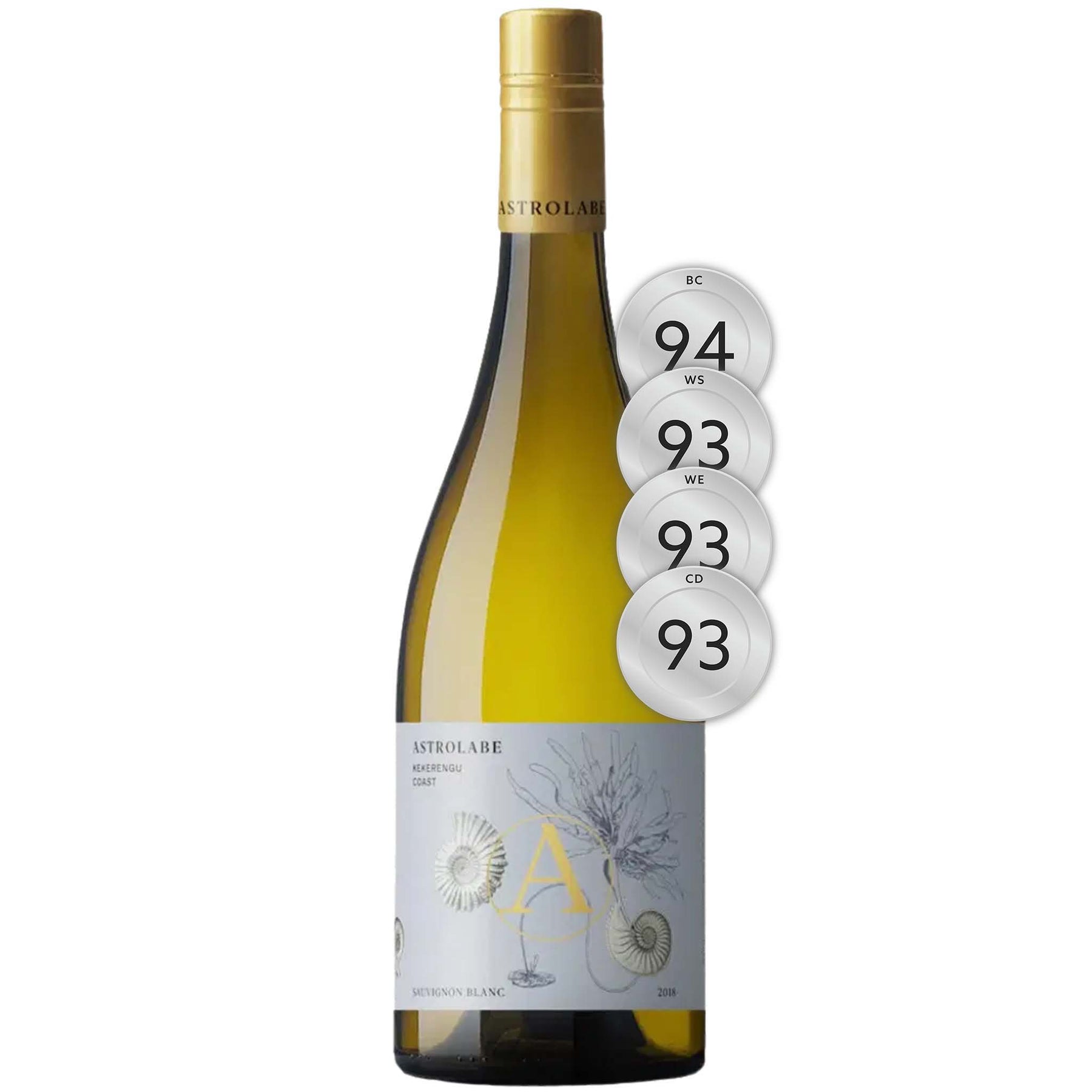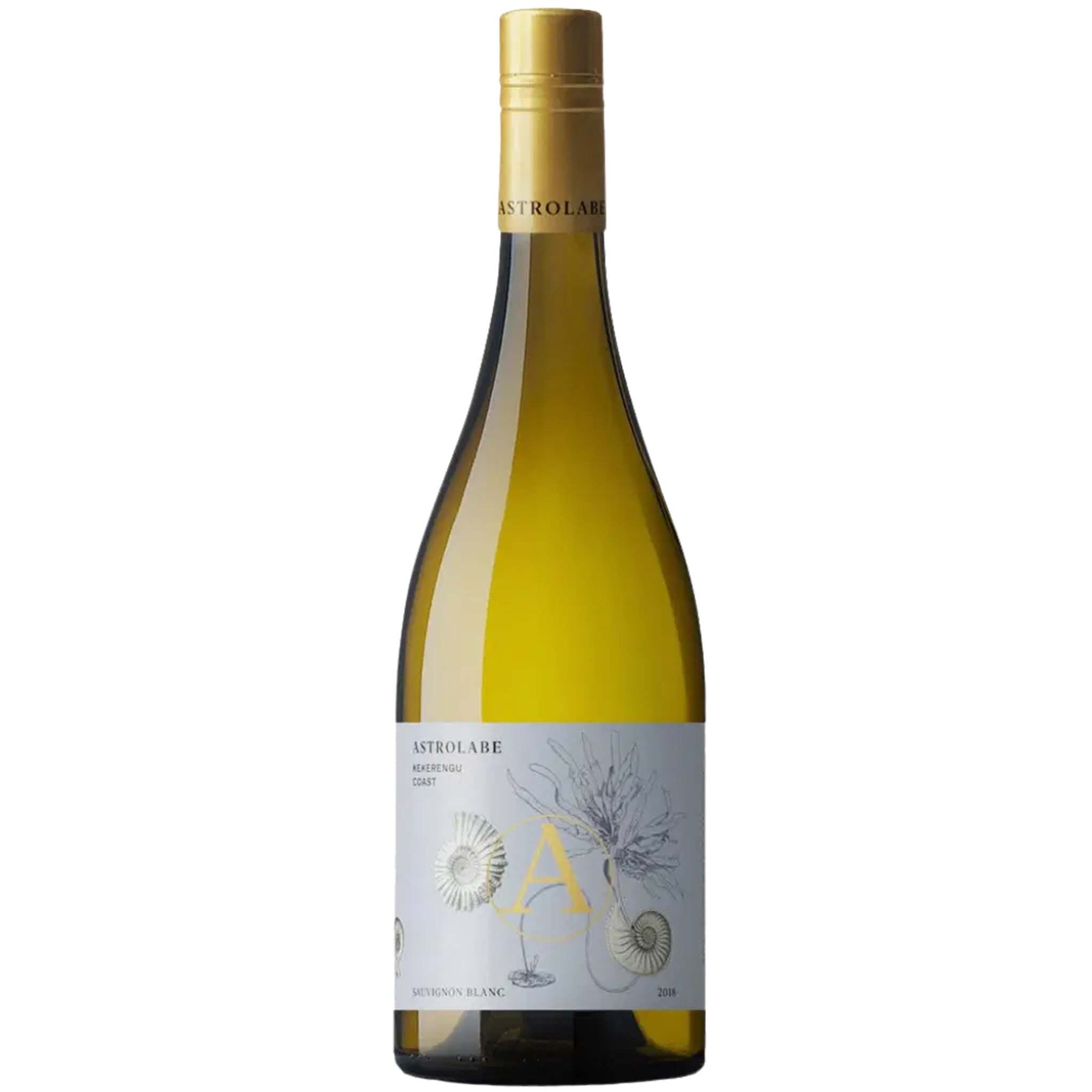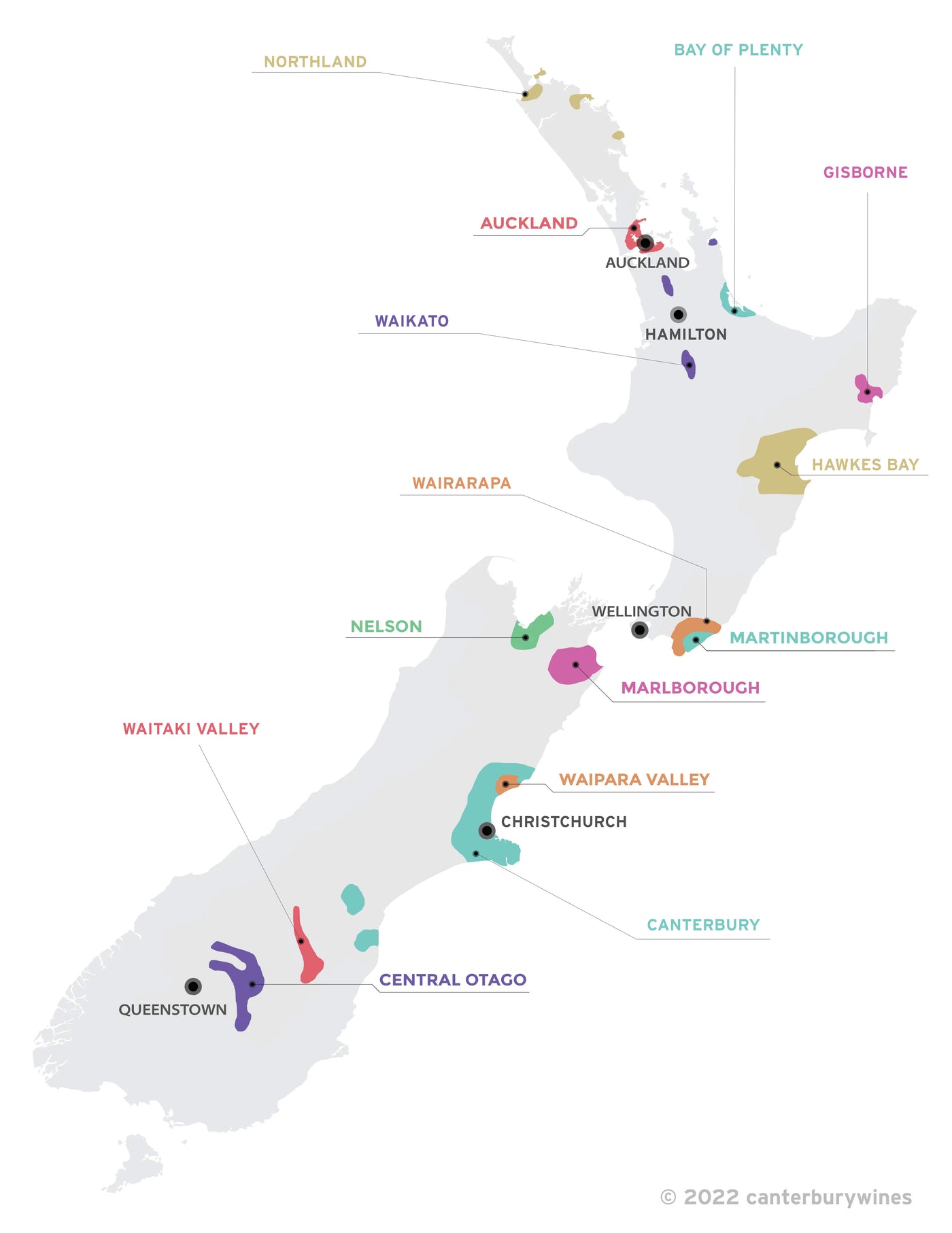

Astrolabe Kēkerengū Coast Sauvignon Blanc 2020
Style: White Wine
Closure: Screwcap
Astrolabe Kēkerengū Coast Sauvignon Blanc 2020
Warehouse
34 Redland Drive
Vermont VIC 3133
Australia
Critic Score: 94
Alcohol: 13.5%
Size: 750 ml
Drink by: 2027
Kēkerengū is a narrow stretch on Marlborough's Southern Coast between sea and mountain and its extreme maritime climate has a profound influence on the wine, with an early budburst and late harvest. A combination of different climate and soil from the rest of Marlborough gives a unique expression of Sauvignon Blanc. The palate is intense with flinty, almost salty notes and passionfruit flavours. It has a lovely briny, salty, savoury finish which speaks of the nearby sea. A wine that appeals to drinkers with European drinking sensibilities who would normally profess not to be lovers of Marlborough Sauvignon Blanc.
"There's beautiful precision to this white, which offers yuzu, pomelo and Fuji apple flavors that are crisp and focused, with notes of green tea and white pepper, plus a hint of crunchy sea salt that lingers on the fresh finish." MaryAnn Worobiec
The Astrolabe Kēkerengū Coast Sauvignon Blanc is made from grapes grown at two vineyards in the Kēkerengū Coast sub-region of Marlborough. It is grown on limestone soils, which are not seen in the Wairau or Awatere Valleys. The combination of different soil and climate from the rest of Marlborough gives rise to this unique expression of Sauvignon Blanc.
"This Sauvignon Blanc enchants the senses with its lively and expressive flavors. It boasts a pale straw color and opens with vibrant aromas of tropical fruits, citrus zest, and fresh herbs. On the palate, the wine delights with flavors of juicy pineapple, ripe passion fruit, and zesty lime, complemented by hints of minerality and a refreshing acidity. The wine's crisp and lingering finish leaves a memorable impression.
Grapes were machine harvested in cool conditions, de-stemmed and lightly pressed with minimal skin contact. Clear juice was tank-fermented at low temperature using neutral yeast strains to allow the powerful fruit flavours to dominate. I blended in a portion of whole bunch pressed, high solids, and wild yeast barrel ferment to add subtle texture and complexity." Simon Waghorn, Winemaker
Expert reviews
"The product of a very favourable and moderately warm, dry vintage, which has pushed flavours to the riper end of the spectrum with nectarine, passionfruit and subtle guava characters. A deliciously silken, textural wine supported by gentle acidity." Bob Campbell MW, The Real Review - 94 points
"There's beautiful precision to this white, which offers yuzu, pomelo and Fuji apple flavors that are crisp and focused, with notes of green tea and white pepper, plus a hint of crunchy sea salt that lingers on the fresh finish." MaryAnn Worobiec, Wine Spectator - 93 points
"Astrolabe consistently delivers Sauvignons of balance and refreshment, and this bottle doesn't disappoint. The nose is rich with aromas of stone fruit, guava and honeysuckle. There's a lovely textural roundness in the mouth that's buoyed by crunchy acidity. Layers of food friendly flavor finish longer with citrus and spice. Drink now and over the next few years." Christina Pickard, Wine Enthusiast – 93 points
"Tropical fruits of mango and pineapple, fresh herbs of basil and sage, citrus aromas of grapefruit then lemongrass and apple. Equally flavourful, youthful, fresh, fruity, tropical and herbaceous on the palate. Dry with plenty of acidity and spice, freshness and a light salty finish. Best drinking from 2021 through 2025+." Cameron Douglas, camdouglasms.com – 93 points
Kēkerengū coast
 The Astrolabe Wilson’s Sleepers Vineyard at Kēkerengū
The Astrolabe Wilson’s Sleepers Vineyard at Kēkerengū
The story of the Kēkerengū Coast Sauvignon Blanc is really defined by where it is: outside of the typical bounds of Marlborough. It is grown on limestone soils, which are not seen in the Wairau or Awatere Valleys. Kēkerengū is a narrow stretch between sea and mountain, and its extreme maritime climate has a profound influence on the wine, with an early budburst and late harvest. This combination of different soil and climate from the rest of Marlborough gives a unique expression of New Zealand Sauvignon Blanc. The Astrolabe Kēkerengū Coast Sauvignon Blanc is made from grapes grown at the Wilson and Trolove family vineyards (refer to the map below).
Wilson’s Sleepers Vineyard
"Chris and Lynne Wilson’s Sleepers Vineyard at Kēkerengū in the extreme south of the Marlborough winegrowing region, is our most coastal vineyard, with a picturesque and historically rich setting. The land, which is part of an old farm station known as Mad Cap Flats, still has two of the original cob buildings built in the early 1860s, which have been fully restored.
Its coastal location promotes early spring and budburst, and it is more exposed to cool southern airflows and late summer sea breezes, giving an extended growing season. Alongside the Kēkerengū River, sauvignon blanc is planted on a low river terrace of free-draining limestone loam with, at times, a very shallow alluvial silt overlay. The sauvignon blanc typically presents with a floral perfume and green passionfruit notes. A little higher up, Albariño is grown on an elevated river terrace of deep silt loam interspersed with fragmented limestone. Kēkerengū’s strongly maritime climate and limestone soil gives salty, zesty Albariño with a taste of the nearby sea. The highest terrace is planted with pinot gris and pinot noir, which are both vibrant and floral. All varieties exhibit a pronounced minerality." Astrolabe
Trolove’s Taihoa Vineyard
"Our southernmost grapes are sourced from Paddy and Anna Trolove’s Taihoa Vineyard, located on Marlborough’s Kēkerengū Coast. Taihoa is our foundation Kēkerengū vineyard. The moderating influence of the nearby sea promotes early spring and budburst. It is more exposed to cooling late summer sea breezes and is not sheltered from the cold southerly winds that miss the rest of Marlborough, giving an exceptionally long growing season.
Taihoa vineyard is made up of two small blocks of vines located on the available flat terraces of this rugged working farm. The Troloves raise sheep and cattle, and the blocks are surrounded by deer fencing to protect from the wild deer that come down from the mountains. Soils here are loamy with fragmented limestone content. The topography allows for good airflow, with gullies surrounding the vineyard terraces.
Taihoa is divided into North and South blocks, and soils are free-draining across both sites on the farm. The south block is surrounded by hills on all sides, save for a small gap facing the ocean. The limestone Mole Hill provides gravity-fed spring water irrigation. Taihoa North block is an elevated site that is adjacent to native bush, and you can hear birdsong and smell the sweetness of the beech and mānuka trees." Astrolabe

Astrolabe Kēkerengū Vineyards and Marlborough sub-regions
About the winery

Founded in 1996 and named after the ship that in 1827 charted and explored the Marlborough Coast, Astrolabe wines were created by seasoned winemaker Simon Waghorn together with his wife Jane. Simon crafts a range of beautiful wines that express the purity and intensity of fruit flavours afforded by the climate and soils of the Marlborough region.
All grapes are sourced from ten families who live on their land and farm sustainably. These carefully chosen sites add complexity and completeness to the wines. Simon is fascinated by the distinctive qualities of the Marlborough sub-regions and in addition to the range of Marlborough Province wines, he also produces wines specific to the Awatere Valley and Kēkerengū Coast sub-regions.
"I choose to live and work in Marlborough because I believe the grapes here are the best in the world. I use all my skills and experience to style wines with elegance and balance that capture the intensity and brightness of our fruit. The diverse terroir of Marlborough's sub-regions broadens my palette as a winemaker to craft complex and individual wines." Simon Waghorn, Winemaker
Simon Waghorn talks about Astrolabe (click on image to play video)

New Zealand
New Zealand is home to more than 700 wineries across 14 wine regions. The regions are Auckland, Bay of Plenty, Canterbury, Central Otago, Gisborne, Hawkes Bay, Marlborough, Martinborough*, Nelson, Northland, Waikato, Waipara Valley, Wairarapa and Waitaki Valley. * Martinborough is a sub-region of Wairarapa, however, as it is world renowned it is considered here to be a region to avoid confusion.
The wine regions in New Zealand stretch from latitudes 36°S (Northland) in the north (comparable in latitude to Jerez, Spain), to 45°S (Central Otago) in the south (comparable in latitude to Bordeaux, France). New Zealand's climate is maritime, producing cooler summers and milder winters than would be expected at similar latitudes in Europe.
Viticulture in New Zealand dates back to 1836 when British resident James Busby produced wine in the far north, but it wasn't until 1985 that the wine industry came of age when Cloudy Bay Sauvignon Blanc garnered international attention and critical acclaim.
New Zealand is internationally renowned for Sauvignon Blanc (particularly from Marlborough), Pinot Noir (Central Otago, Martinborough and Waipara Valley), Chardonnay, Bordeaux-style blends of mainly Merlot and Cabernet Sauvignon (Hawkes Bay) and Syrah (Hawkes Bay). Sauvignon Blanc accounts for 63% of the area of the national vineyard, followed by Pinot Noir (14%), Chardonnay (8%), Pinot Gris (7%) and Merlot (3%).


